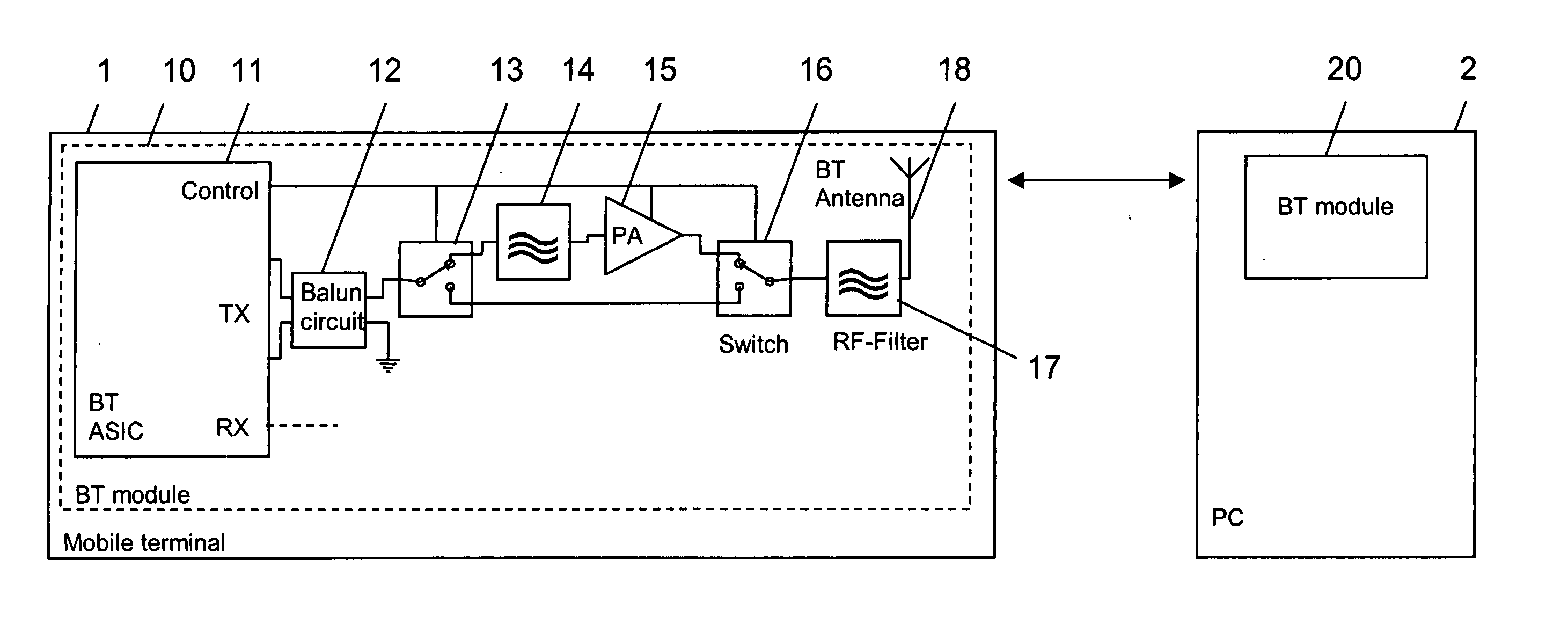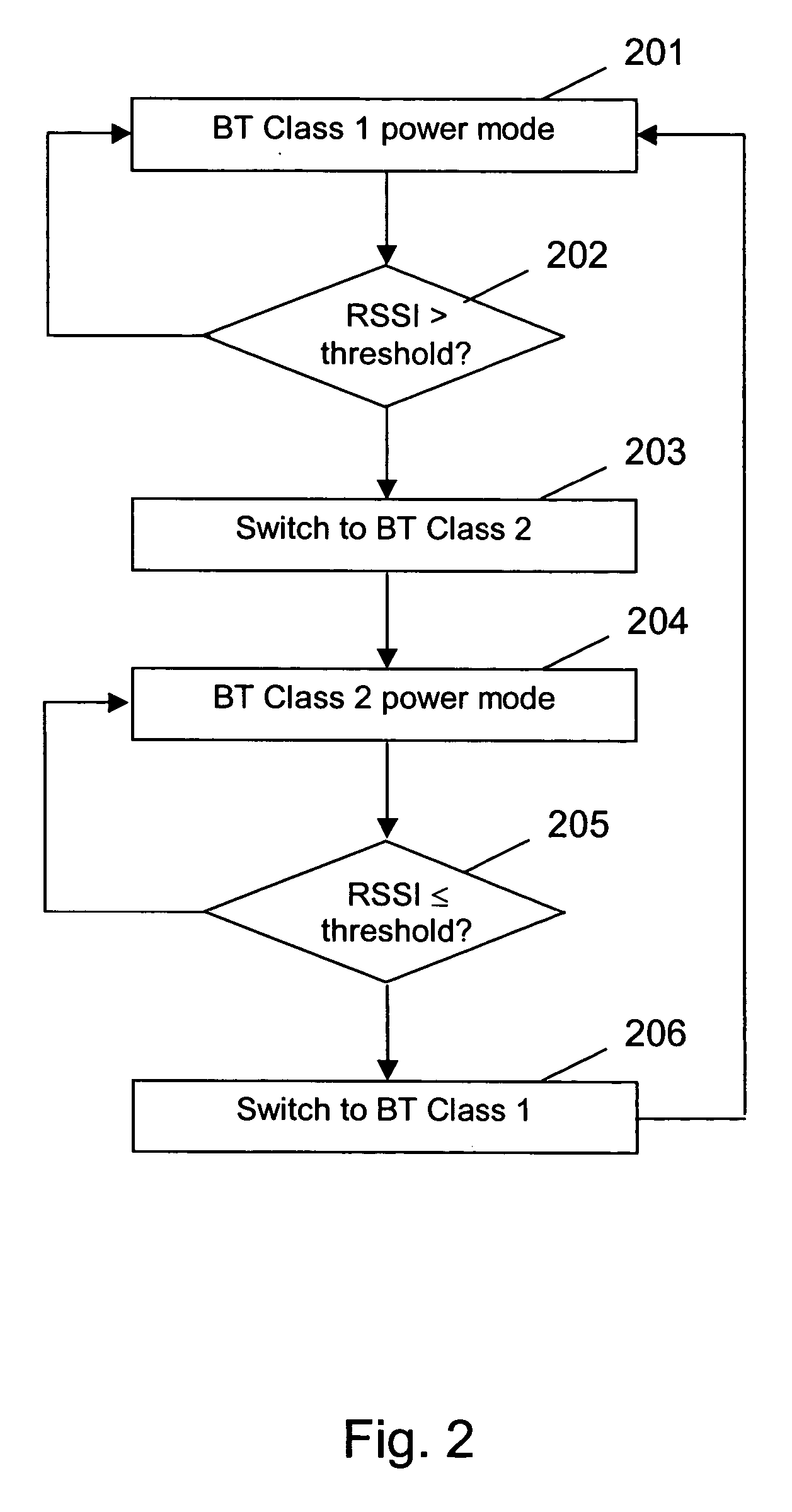Handling transmissions via a radio link
- Summary
- Abstract
- Description
- Claims
- Application Information
AI Technical Summary
Benefits of technology
Problems solved by technology
Method used
Image
Examples
Embodiment Construction
[0035]FIG. 1 schematically presents a system according to an embodiment of the invention, which enables a power reduction in a Bluetooth™ (BT) enabled device.
[0036] The system comprises a mobile terminal 1 as a first electronic device and a personal computer PC 2 as a second electronic device.
[0037] The mobile terminal 1 and the PC 2 both include a Bluetooth™ module 10, 20 as a respective radio link module.
[0038] The Bluetooth™ module 10 of the mobile terminal 1 comprises a Bluetooth™ ASIC 11. The ASIC 11 corresponds to a conventional Class 2 Bluetooth™ ASIC, except for a particular control portion.
[0039] A transmitter portion of the ASIC 11 comprises an integrated power amplifier supporting the Class 2 power mode. The transmitter portion TX of the ASIC 11 is connected outside of the ASIC 11 but within the Bluetooth™ module 10 via a Balun circuit 12, a first by-pass switch 13, a first RF filter 14, a power amplifier 15, a second by-pass switch 16 and a second RF filter 17 to a B...
PUM
 Login to View More
Login to View More Abstract
Description
Claims
Application Information
 Login to View More
Login to View More - R&D
- Intellectual Property
- Life Sciences
- Materials
- Tech Scout
- Unparalleled Data Quality
- Higher Quality Content
- 60% Fewer Hallucinations
Browse by: Latest US Patents, China's latest patents, Technical Efficacy Thesaurus, Application Domain, Technology Topic, Popular Technical Reports.
© 2025 PatSnap. All rights reserved.Legal|Privacy policy|Modern Slavery Act Transparency Statement|Sitemap|About US| Contact US: help@patsnap.com



